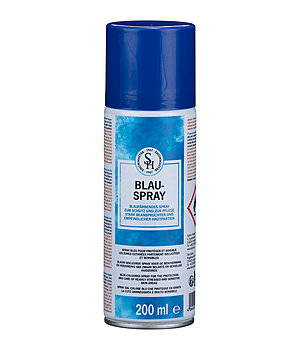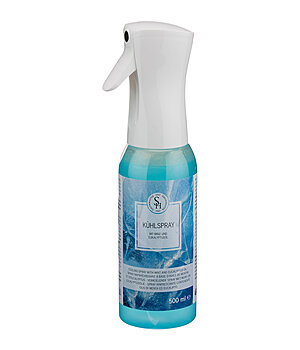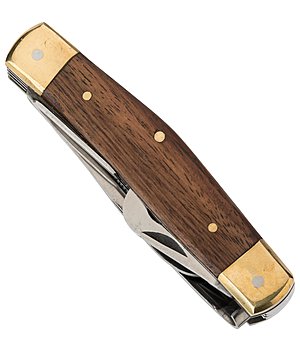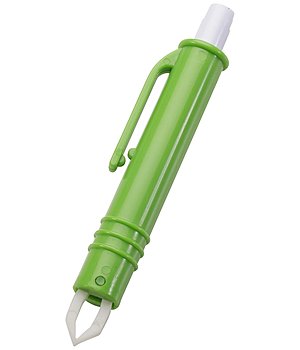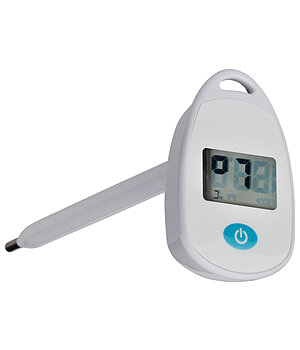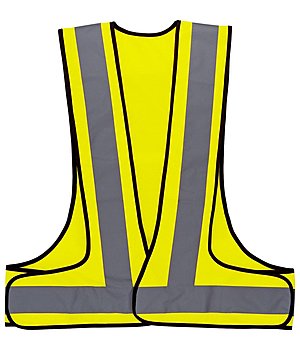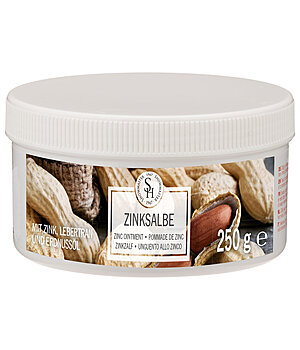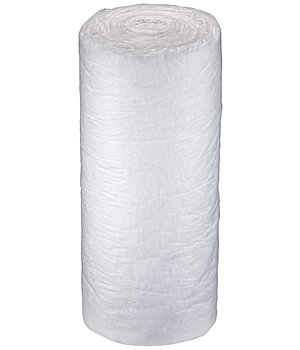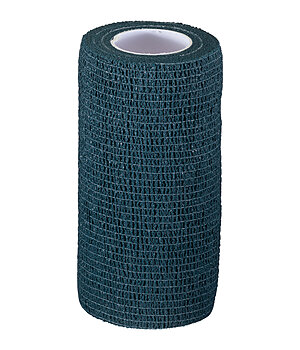What belongs in an equine first aid kit?
An injured or sick horse is often one of the worst things a rider can imagine. While minor injuries are more common and can usually be treated without veterinary assistance, acute emergencies unfortunately sometimes occur in which immediate action can be vital.

In addition to the appropriate know-how on how to administer first aid to horses, a well-stocked equine first aid kit creates the best conditions for your horse’s quick recovery! We explain to you what you should pay attention to when using the equine first aid kit! We also provide you with a comprehensive checklist for your equine first aid kit.
Equine first aid kit – what to look out for?
- The equine first aid kit should be easily accessible in case of emergency. People standing in for holiday cover should also know where to find the first aid kit.
- Keep the first aid kit in a dry and protected place.
- Check the contents regularly for completeness and shelf life.
- Close the medicines securely so that nothing can leak out.
- Immediately refill the contents as soon as the first aid kit has been in use! This is the only way to ensure that everything is ready to hand if another emergency occurs.

Equine first aid kit – what should be in it?
| Basics | – Bandage scissors – Normal scissors – Tweezers – Tick remover – Disposable gloves – Clinical thermometer – Disposable syringes – Disposable razors – Clean towels – Cooling pads – Poultice/Therapy hoof boots – Torch – Telephone list with emergency contacts |
| Dressing materials | – Bandages – Wadding – Gauze dressings – Sterile dressings – Non-sterile dressings – Gauze pads – Sterile wound dressing – Fabric tape – Rubbish bags – Adhesive tape for plasters – Spray-on plaster |
| Medicines | – Hand disinfection – Wound spray – Iodine soap – Wound ointment – Zinc-containing ointment or zinc spray – Udder cream – „WellBeing“ Oil – Mineral soil or kaolin paste |
You should proceed with great care when putting together your equine first aid kit. In order not to lose track of what still needs to be procured, we provide you with an equine first aid kit checklist to download for free.
Every horse is different
We cannot take into account individual illnesses, drug intolerances or particularities of keeping in our list. Of course, a horse with a chronic disease should also have the appropriate medication available at all times. The equine first aid kit of a horse that, for example, has to deal with colic or blunt injuries more often, will possibly also be somewhat broader in scope, so that the appropriate medication can be administered at an early stage. Since quick first aid can often prevent serious complications, yards that are more difficult to reach for veterinarians due to poor transport connections also depend on the equine first aid kit being somewhat more extensively stocked.
Safe on the road – the emergency first aid kit for trail riding

Experienced trail riders limit their luggage to the basics. The lighter the weight of the saddlebags, the easier it is on the horse’s back during a trip into nature. However, a small emergency first aid kit for humans and animals should be included in any case – regardless of whether it is a one-day trail or lasting several days.
The scope of the first aid kit should correspond to the respective conditions of the planned trail ride. Are you planning a multi-day trail ride through rough terrain, far away from civilisation? The more demanding the trail, the more comprehensive your first aid kit should be. The time it takes for a veterinarian to reach the scene of an accident must be ensured by first aid.
Checklist for your trail ride first aid kit:
Accidents or injuries on trail rides can affect both horses and people. Therefore, when compiling your first aid kit for trail rides, think not only about first aid for the animals, but also about yourself.
Wound cream, painkillers etc. should therefore be available for both the rider and the horse. Some products, such as horse ointments for strained muscles and joints, have already been designed for use on both humans and animals. With the help of such 2-in-1 products, you can save valuable space in your saddlebag.
- Bandages
- Duct tape
- Scissors
- Disposable gloves
- Foil blanket
- Plasters
- Wound spray or iodine soap
- Wound ointment (e.g. zinc ointment)
- Clinical thermometer
- Painkillers
- Cooling gel for blunt injuries or strained muscles
- Tick remover
- Medical hoof boots
- Electrolytes
- Disposable syringes
- Fly spray
- Waste bags
- White line pick or Horseman’s Knife
- High-visibility waistcoats
First aid kit
So that you don’t have to laboriously put together the first aid kit yourself, first aid kits which are used for vehicles are also suitable. These are also available in space-saving bags.



